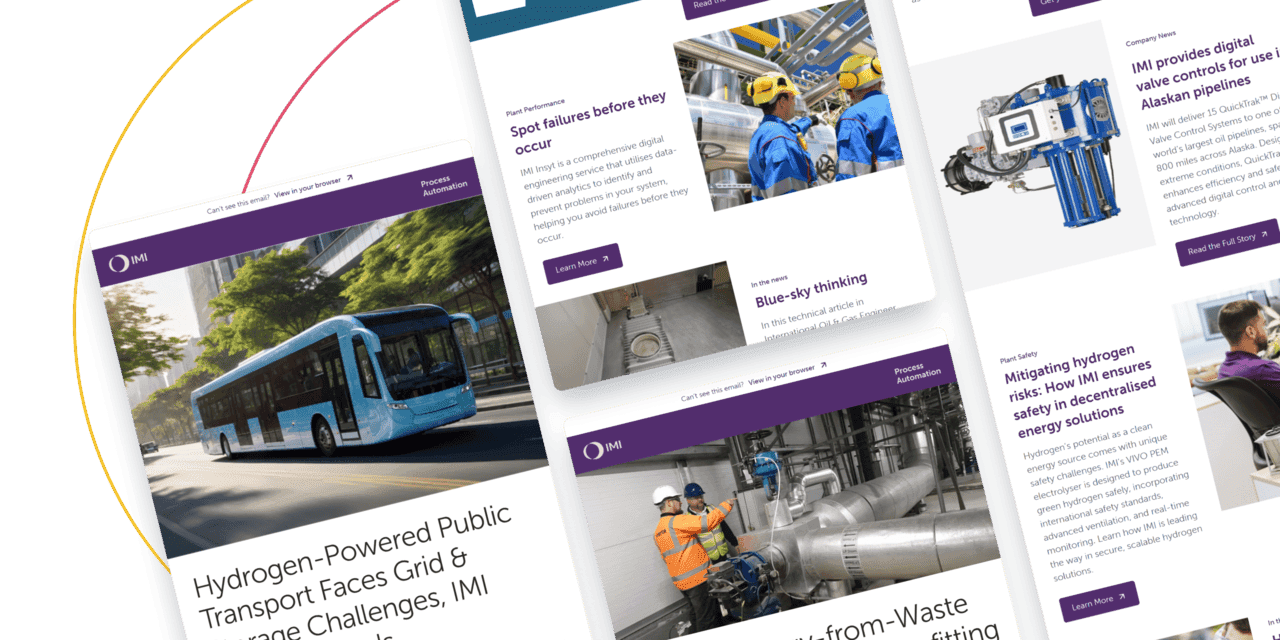
BLOG
How IMI’s field services programme is turning the tide for submarine availability

Written By Vinita Meisner
June 5, 2025
Submarines belong at sea. Yet, for many navies, operational deployment has become much harder to achieve in recent years, so much so that it’s become a defining challenge for those at the highest levels of naval command.
The public funds these vessels and depends on them as a cornerstone of strategic defence with allied nations. A submarine docked for longer than necessary generates both financial and national security concerns.The problem is further compounded by the fact that naval defence maintenance programmes frequently incur high costs. High in-house shipyard costs and key resourcing issues, such as an ageing workforce and critical skills gaps, are perennial problems facing naval commands.
This industry challenge inspired IMI’s Marine Field Services Programme, which was developed in direct response to requests from both navies and defence primes maintaining submarine fleets. Our programme supports the critical role of valves in ballast control, propulsion, cooling, hydraulics, and emergency systems.
By providing expert onsite engineering support, the programme helps navies and primes better use resources, ensure that maintenance work is carried out accurately, and, crucially, enable sake better use of resources, ensure that maintenance work is carried out accurately, and, crucially, enables shipyards to deliver projects on time and within budget, ultimately maximising fleet availability.
So, what’s involved and what have we seen in terms of savings?
Why it matters
The fleet availability challenge, which you can read more about below is not unique to any nation, region, or class of vessel. This is partly due to the complex nature of modern underwater naval vessels and various infrastructure, resource, and personnel challenges.
So, even routine maintenance can be a major undertaking, with a huge number of people responsible for different aspects of servicing. If one point in the supply chain hits a bottleneck, the whole maintenance programme can easily be jeopardised.
There are a few notable cases that bring this issue into sharper focus, of which the United States Navy provides a good example. In 2023, almost 40% of the Navy’s attack submarines were in service or awaiting repair due to shipyard worker and spares shortages. These idle boats were especially problematic as the fleet had already shrunk in size from 53 vessels to 49, leaving the US naval high command with fewer available undersea units than a decade earlier and at a time of heightening international tension.[1]

Royal Navy submarine surfacing at sea
The second example demonstrates the impetus for formalising our field service maintenance programme. IMI was asked to support the delivery of the Astute-class submarine being built at Barrow-in-Furness in the United Kingdom and the maintenance of those already constructed but waiting in dock for servicing. This conversation developed after low deployment for the Astute class, with no completed boats being deployed on operations for the first six months of 2024.[2]
Bringing valve expertise closer
The programme requirements were precise and centred around simplifying and streamlining valve installation and maintenance so that vessels can return to sea within the allocated time.
We responded by developing a field service programme that has transformed the efficiency of these activities. IMI engineers can now reach many sites worldwide in the same week, and spares can be shipped as quickly as required.
The programme is seamless because it’s been designed that way. With a team member on call, visual inspections, functional testing, disassembly, and cleaning can all be carried out without shipping parts back, cutting down the valve maintenance window from months to days. And in cases where a boat is still in construction, an IMI engineer can consult while at the installation and train others to make the process quicker next time.
While every contract is case-specific, a field service engineer will typically be able to support the following tasks:
Inspection and diagnosis – Visual inspections, functional testing, non-destructive testing (where appropriate).
Maintenance – Disassembly, cleaning, seal and gasket replacement, re-machining, reassembly and calibration.
Testing and commissioning – Pressure tests, system integration, final acceptance
Spares and logistics – Procurement of parts, inventory management, and obsolescence management.
Documentation and compliance – Logging, certification, traceability reports.
Other parts of the world have also benefited from this programme. Some regions, for instance, cannot ship valves back to IMI, making it essential for them to have one of our team members nearby.
This is why we’re investing in regional field service depots to reduce the time it takes for one of our engineers to reach the site. This investment is key because working this way avoids unnecessary and highly costly delays for our customers. Valves are often found sitting in warehouses and unused for extended periods, so it’s advisable to cycle these designs at least once a month to prevent seizure. Field service engineers can catch these stored components long before they reach a boat and risk malfunctioning once fitted. It’s a simple check often missed despite potentially costing hundreds of hours in lost productivity.
Field servicing won’t solve the fleet availability challenge alone. But it’s a powerful ally for those facing long lead times on one side and pressure from their naval command on the other.
Submarine images used in this article are subject to Crown Copyright and used with permission.
Blog
Fleet Availability – Ensuring the ‘ultimate guarantee of our security’
Nuclear submarines play a crucial role in protecting and defending the high seas. Navigating often difficult waters across thousands of miles each year, this silent force deters aggression and helps ensure global security and prosperity.
Keep in touch
Stay up to date on all the latest news and articles from IMI.

Keep in touch
Stay up to date on all the latest news and articles from IMI.


Keep in touch
Stay up to date on all the latest news and articles from IMI.